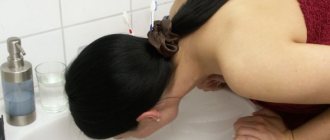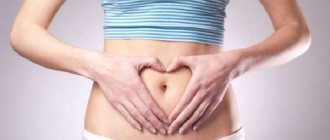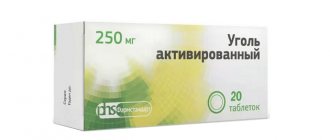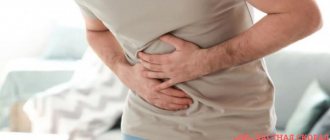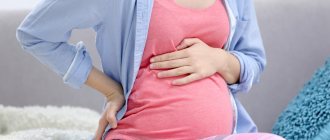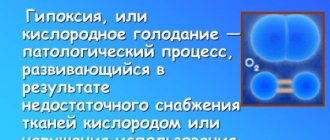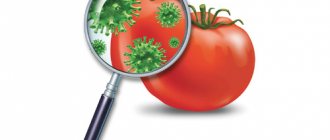Poisoning is a large group of pathological conditions, the key factor in the development of which is exposure to toxins on the body. These can be a variety of substances - from industrial to household. The most common types of poisoning are considered to be food poisoning - this is the consumption of poor-quality food contaminated with pathogenic microbes or their toxins. Usually this condition is not severe and disappears within a couple of days as the body rids itself of toxic substances. But there may be more serious cases that require hospitalization and active treatment.
In most cases of food poisoning, food is contaminated with pathogenic bacteria, such as salmonella or E. coli, staph, or a virus such as norovirus. Symptoms of food poisoning appear within 1 to 2 days after eating contaminated food, although they can begin anywhere from a few hours to several weeks later.
In most cases, all signs disappear after a few days, and the person fully recovers. Diet and plenty of fluids are often sufficient to treat these conditions. If symptoms of poisoning are severe or persistent, or the person is more vulnerable to serious infection (for example, because they are older or have certain medical conditions), further treatment may be needed. In this case, tests may be done on stool samples to find out what is causing the symptoms, and antibiotics may be prescribed if the results indicate it is a bacterial infection.
Medicines to stop nausea and vomiting (antiemetics) may also be prescribed if the condition threatens dehydration and complications. In some cases, hospitalization may be required for several days so that the person's condition can be monitored by doctors and fluids administered directly into a vein (intravenously). For most poisonings, it is necessary to take oral solutions for rehydration (combat dehydration), use enzyme preparations and sorbents, and medications to restore microflora. Only doctors can select the best anti-poisoning pills for adults, although there are a number of drugs that can be used at home.
Top 5 rating according to KP
We have selected a number of drugs that are most often recommended for food poisoning in adults and can be used at home, under the supervision of a doctor. In case of complications or deterioration of the condition during treatment, you must call a doctor at home.
Activated carbon
Activated carbon. Photo: Pharmstandard-Leksredstva
This medicine is sold in tablets that have a specific black color. It can be purchased at any pharmacy without a prescription; it belongs to the group of sorbent substances that do not have selectivity. The medicine is based on activated carbon, which absorbs toxins, metabolic products, fragments of bacteria or viruses from the intestinal lumen.
The drug is used:
- for any types of poisoning;
- for toxic infections (consumption of poor quality food);
- for acute intestinal infections of microbial and viral nature;
- for any type of diarrhea.
Although the drug is well tolerated and widely used, it also has a number of contraindications for use. These are intolerance to components, ulcers in the digestive tract, bleeding, since the color of the drug can disguise them. Also, charcoal should not be prescribed simultaneously with oral antidotes, as it will also bind drug components. The drug may cause side effects such as constipation if high doses are taken.
show more
Mezim forte
Mezim forte. Photo: Berlin-Chemie
The medicine is in the form of film-coated tablets. They can be bought without a prescription; the main active ingredient is pancreatic enzymes, which help ease digestion, which is impaired by poisoning and foodborne illnesses with diarrhea. Usually taken as part of complex treatment against the background of diet correction as the condition improves.
Shown:
- to facilitate digestion of food;
- breakdown of proteins and fats when following a diet after poisoning;
- eliminating nausea, bloating, flatulence due to dietary errors.
The drug has a number of contraindications, these include, in particular, the period of acute pancreatitis or exacerbation of chronic pathology. It is usually well tolerated; side effects include allergies, constipation, and bloating.
show more
Cerucal
Cerucal. Photo: PLIVA Hrvatska doo
The medicine is produced in the form of tablets or solutions for intramuscular or intravenous administration. This is an antiemetic drug that simultaneously normalizes intestinal motility, which helps eliminate painful nausea and vomiting due to foodborne toxic infections due to the main active ingredient - metoclopramide.
Main indications for use:
- acute gastritis;
- gastroesophageal reflux with vomiting;
- pyloric spasms;
- digestive disorders with nausea and frequent bouts of vomiting.
The medicine has a number of contraindications that you need to remember - these are problems with the liver and kidneys, neurological disorders, bleeding from the digestive tract, intestinal obstruction, glaucoma, age under 2 years.
On a note
Instructions: how to act in case of food poisoning
Nifuroxazide
Nifuroxazide-Vertex. Photo: Vertex
The medicine is available in the form of capsules and individual sachets with powder for oral administration. Sold without a medical prescription, it is an antimicrobial drug with the active ingredient nifuroxazide, a synthetic antibacterial agent. It has a bactericidal effect, with virtually no effect on the intestinal microflora.
Indications for use:
- various types of diarrhea;
- foodborne illnesses caused by bacteria;
- diarrhea due to various types of digestive disorders.
The drug has virtually no contraindications, with the exception of early childhood (up to 2 months). The drug is not absorbed into the blood, but works at the intestinal level.
show more
No-shpa
No-shpa. Photo: Chinoin
Sold in the form of tablets of a typical appearance and bright yellow color and “forte” form, dispensed from pharmacies without a prescription. The main active ingredient is the antispasmodic component – drotaverine.
Relaxes the smooth muscles in the digestive tube, eliminating spasms during poisoning and reducing pain.
Indicated for:
- gastritis of unspecified nature;
- pain arising from digestive disorders;
- spasms of smooth muscle fibers;
- intestinal colic.
Despite its safety and effectiveness, the medicine has a number of contraindications for use - allergies to components, liver and kidney failure, heart damage, hypotension, age under 6 years, lactation, galactose and lactose deficiency, pregnancy. Side effects include palpitations, decreased blood pressure, and headache.
show more
Good to know
Poisoning by poisonous plants: first aid
How to deal with the consequences of food poisoning
metaprebiotics
diarrhea
digestive problems
microflora
microbiota
Food poisoning (intoxication) is a severe functional disorder of the gastrointestinal tract, which is provoked by pathogens and their metabolic products (toxins), as well as factors not related to pathogenic microflora. Food poisoning caused by consumption of low-quality and thermally unprocessed food of animal and plant origin is more common among the population. Not only any type of poisoning in the midst of an illness is dangerous, but also the consequences that a person faces after recovery.
Symptoms of food poisoning
The pathogenic microorganisms themselves, their metabolic products or other toxic substances, aggressively affect the gastrointestinal tract along its entire length. Food poisoning is accompanied by dehydration (dehydration), damage to the mucous membrane of the stomach and intestines, and an imbalance of intestinal microflora.
The following are common symptoms of food poisoning:
- nausea and vomiting;
- stool disorders in the form of diarrhea (the frequency of the urge to defecate and the consistency of stool depends on the severity of poisoning);
- pain in the umbilical, left or right iliac region;
- bitter taste in the mouth;
- muscle weakness;
- general malaise;
- pale skin;
- headache;
- increased body temperature;
- dyspnea;
- drowsiness.
Toxins released by pathogenic microorganisms negatively affect the thermoregulation center located in the hypothalamus. The result of this influence is chills and fever. Diarrhea due to food poisoning is profuse in nature. Diarrhea and vomiting lead to significant loss of body fluids and the development of dehydration. Dehydration or dehydration is accompanied by increased heart rate and increased blood pressure.
The first symptoms of intoxication become apparent within 24 hours from the moment pathogens and other toxic compounds enter the body. Depending on the severity of poisoning, body temperature can range from 37.3-40 degrees.
Classification of food poisoning
Foodborne illnesses are divided into 2 main groups:
- Microbial origin. Food intoxication of microbial origin develops when microorganisms of a bacterial or fungal nature enter the body with food. Poisoning can be caused by enterococci, staphylococci, botulinum bacillus, bicilli, vibrios, E. coli, aspergillus, microscopic fungi, and penicillium.
- Non-microbial origin. This type of toxic infection is triggered by natural poisons of both plant and animal origin. Such components are found in the core of apricot kernels, poisonous wild berries and mushrooms, some weeds, sprouted potatoes, burbot caviar, and mussels.
Also, food poisoning can develop when salts of heavy metals, pesticides, nitrosamines and cyclic hydrocarbons enter the body.
First aid for food poisoning
If symptoms of food poisoning occur, you must follow the following algorithm:
- A person should be given 3-5 glasses of clean water to drink, and then induce a gag reflex by pressing two fingers on the root of the tongue. The procedure should be repeated until the water coming out is clean.
- After cleansing the stomach, it is necessary to give the victim an enterosorbent 4 times in a row with an interval of 15 minutes.
- The patient should be wrapped up and ensure complete rest. In the first 24 hours, the victim must refrain from eating food.
Nutrition after poisoning
In order not to worsen your general condition, it is important to know what you can eat after poisoning and what it is better to avoid. It is recommended to start eating on the second day after poisoning. You should start with weak chicken broth, moving on to pureed rice soups. The diet includes weak black tea without sugar, day-old white bread, crackers and crackers, baked apples without sugar, semolina, oatmeal, buckwheat porridge with water, lean fish, steamed or boiled.
Exclude semi-finished products, fried and fatty foods, fatty meats and fish, fresh vegetables and fruits, confectionery, baked goods, sauces, seasonings, spices, and fast food from the diet. The food consumed should not create additional stress on the digestive system and should not provoke diarrhea or irritation of the gastrointestinal mucosa. After suffering a food poisoning, it is very important to take care of restoring the intestinal microflora, since in 75% of cases, intestinal dysbiosis develops after poisoning.
It will take a lot of time for the body to restore normal microflora on its own, and it will not be able to do this fully. The question arises of how to restore the intestinal microflora by resorting to outside help. Metaprebiotics are a real first aid for an organism weakened by food poisoning and its consequences.
Stimbifide Plus is a fundamentally new product , which contains fructopolysaccharides and fructooligosaccharides, as well as calcium lactate. Together, these components actively restore the balance of intestinal microflora, providing it with a natural nutrient substrate and preventing the proliferation of pathogenic microorganisms.
It has been clinically proven that even the best prebiotic among modern brands does not compete in terms of effectiveness with metaprebiotics. Metaprebiotic Stimbifid Plus not only prevents and treats dysbiosis after food poisoning, but also helps to carefully restore the epithelium of the gastrointestinal tract, which has been damaged by bacterial waste products and other toxic components.
In addition, for severe food poisoning, antibiotics may be prescribed. Stimbifid Plus will help avoid the consequences of antibiotic therapy. It is necessary to start taking the metaprebiotic as early as possible, and continue to take Stimbifide Plus for 1.5-2 weeks after the general condition has normalized.
14.09.2020
68942
25
/ Doctor Stimbifeed
If the article was useful to you, share it with your friends:
How to choose anti-poisoning pills for adults
If the poisoning is severe or lasts more than a day without getting better, you should consult a doctor. A specialist can determine the causes of food poisoning and select anti-poisoning pills for adults. In case of severe symptoms, the following groups of drugs are used:
- antibiotics and intestinal antiseptics, if the microbial nature of the infection is proven;
- drugs to absorb toxins (activated carbon, Enterosgel, white coal, Smecta);
- means for normalizing intestinal motility (prokinetics) and antiemetics;
- solutions for oral rehydration (mixtures based on salts and glucose);
- probiotics and prebiotic preparations, synbiotics;
- additional drugs to eliminate symptoms (antipyretic, antidiarrheal).
Any medications and their combinations should be selected only by a doctor, excluding surgical diseases, dangerous conditions and complications.
First aid for food poisoning in a child Advice from a pediatrician
04.06.2019
About the kids
Zhukova Elena Mikhailovna
Such a nuisance as food poisoning (scientifically called food toxic infection - PTI) can happen to us at any time of the year. But in summer it is also hot, hence the higher risk of encountering this scourge. And for children, especially small ones, it is doubly dangerous.
"Forewarned is forearmed". Where should you “spread the straw”? What symptoms of poisoning require emergency medical attention? What can and should be done before she arrives, and what, on the contrary, cannot be done? How to help yourself and your child far from civilization?
Answered by children's allergist-immunologist, homeopath Zagerclinic Zhukova Elena Mikhailovna.
NA: Where can we expect an “attack” in the summer? How to reduce the risk of contracting PTI?
E.Zh.: The recommendations are not new or original, but they are effective. Firstly, wash fruits, vegetables and berries well before eating. Even if they are from their own dacha, where everything seems to be clean. But the strawberry, for example, is still on the ground. It's definitely better to wash it.
Secondly, try not to store cooked food for a long time (even in the refrigerator).
Thirdly, pay special attention to milk, sour cream, and fermented milk products (if they are not stuffed with antibiotics and preservatives, they spoil very quickly in the summer). Fourthly, do not forget to wash your hands before eating.
On the other hand, it is desirable that the child, despite the lack of activities in the summer, still maintains a diet and does not intercept berries from the garden between meals. It is better to collect berries or fruits and bring them for lunch.
That is, the danger of contracting food poisoning comes from both violation of the regime and violation of hygiene rules.
N.A.: How dangerous is acute poisoning for a child?
E.Zh.: For any age, it provokes a breakdown of the immune system. The most dangerous thing for babies is dehydration. In a child from birth to four years of age, when an acute situation occurs with excessive release of water (loose stools and vomiting), life-threatening dehydration can occur within a few hours.
N.A.: What should parents be especially wary of? How does the baby's body signal the onset of dehydration?
E.Zh.: In addition to vomiting, diarrhea and temperature, the first alarm signal is a decrease or absence of urination in the baby. This is a clear reason to see a doctor. In the meantime, help is on the way, you need to feed the baby yourself.
That is, the first thing we can do in case of acute poisoning is to replenish the loss of fluid in the body, because its loss is very life-threatening.
N.A.: How to give water to a baby if he vomits very often?
E.Zh.: If there is excessive vomiting, it is possible and necessary to feed the child. It is very important that this is done in very small portions. Because against the background of poisoning, the gag reflex is strong, and even 2-3 sips lead to resumption of vomiting.
The water should be warm - slightly warmer than body temperature (cold water causes spasms and provokes vomiting). A single volume is a teaspoon at intervals of five minutes. Warm water in small portions does not irritate the stomach, has time to be absorbed and prevents increased dehydration. This almost corresponds to the infusion therapy (drip) regimen.
I repeat: fever, profuse vomiting (more than 3-5 times) and diarrhea, especially in a small child, are a reason to call an ambulance. Waiting until it goes away on its own is very dangerous in such a situation.
N.A.: While the ambulance is on its way, is it enough to just feed the child or can you give him some medicine?
E.Zh.: It’s better for the medicine to be prescribed by a doctor. Centrally acting drugs for vomiting and diarrhea, especially at an early age, block the mechanisms of toxin elimination and, thereby, lead to even greater intoxication. In a hospital, if necessary, a doctor can prescribe them against the background of intensive detoxification therapy. But you should absolutely not do this yourself at home.
Thus, the algorithm of action for acute food poisoning in a child is as follows:
1. Active drinking with warm water in small portions (a teaspoon every five minutes).
2. Seeking medical help.
3. Lack of self-medication (using a variety of widely advertised drugs). The only medicine that we can give the child before the ambulance arrives is a sorbent (activated carbon, smecta, filtrum, enterosgel, etc.).
N.A.: Doctors recommend that adults with acute PTI (after severe repeated vomiting and diarrhea) be given warm water with salt, sugar and soda or pharmaceutical rehydron. This mixture not only replenishes water, but also lost vital electrolytes.
Is this mixture suitable for children?
E.Zh.: You need to be very careful with saline solutions, because each age has its own specific salt concentrations. You may not guess correctly and, while wanting to be beneficial, you may harm the baby’s body. After all, salts draw out water and, at higher concentrations, can worsen dehydration.
Therefore, the simplest, most effective and safest thing for babies is water. Without salt, sugar and other additives.
N.A.: And if acute poisoning happened far from civilization (on a hike, for example) and there is no opportunity to receive quick medical care, how not to waste time? What symptoms still indicate the need to leave the route and move towards a populated area as quickly as possible?
E.Zh.: First of all, we try to prevent dehydration - we give the child a teaspoon of warm water at intervals of five minutes. Be sure to give enterosorbents (you should have them in your travel first aid kit!) and give the child the opportunity to rest and sleep. If the temperature is high, then we try to cool the child (for example, using cold compresses). We don’t feed him for several hours (we just continue to water him) and watch the dynamics.
Signs of obvious positive dynamics:
- cessation of vomiting and diarrhea;
- decrease in temperature;
- normal urination.
If after 5-6 hours the situation levels out, you can start feeding. Boiled cereal. You should not give raw berries, stewed meat, or sweets. Just porridge. A little. A few spoons.
For several days after acute poisoning, it is better not to overload the child with food, especially canned food. Continue to drink water, eat porridge and give adequate physical activity.
If, despite all our actions (sweating, enterosorbents), the temperature does not decrease, vomiting and diarrhea continue, weakness increases, urination has decreased or stopped - this is a very alarming signal! The child urgently needs medical attention.
N.A.: “Poisoning is a biochemical injury.” By analogy with the physical, it has its short-term effects and long-term consequences. What are the long-term consequences of acute food poisoning?
E.Zh.: First of all, this is the chronization of the process. For example, the acute phase in a child lasts 2–3 days, and then loose stools persist for several weeks. That is, we have dealt with acute intoxication, but it is too early to talk about recovery - the unfavorable situation in the intestines still remains, the toxic load continues. This issue must be taken seriously. Fortunately, children are children. They recover faster and cope with the consequences more easily.
Make an appointment
Types of infection
Food contamination is usually caused by bacteria, but can sometimes also be caused by viruses or parasites. Some of the main options.
Campylobacter. In our country, Campylobacter bacteria are the most common cause of food poisoning. The bacteria are commonly found in raw or undercooked meat (especially poultry), unpasteurized milk, and untreated water. The incubation period (the time between eating contaminated food and the onset of symptoms) of food poisoning caused by Campylobacter is usually two to five days. Symptoms usually last less than a week.
Salmonella. Salmonella bacteria are often found in raw or undercooked meats, raw eggs, milk and other dairy products. The incubation period usually ranges from 12 to 72 hours. Symptoms usually last four to seven days.
